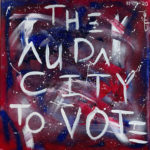5 Ways To Brand Miami, Destinations, And The Arts.
Posted on September 10, 2012 at 4:05 pm.
Written by Bruce Turkel re-posted with permission
Here’s something I don’t understand:
Status, financial success, legislative power, and importance are all the providence of commerce. Yet when we look back over history we see that great societies are remembered not by the business they did but by the art they created.
 Sure, there are some stories told about the merchant classes of 15th century Amsterdam or the spice and trade routes of ancient Asia, but for the most part we remember human artistic achievement —from the Venus of Willendorf to Greek and Roman sculpture to the great composers of Europe and the jazz and blues of the American South.
Sure, there are some stories told about the merchant classes of 15th century Amsterdam or the spice and trade routes of ancient Asia, but for the most part we remember human artistic achievement —from the Venus of Willendorf to Greek and Roman sculpture to the great composers of Europe and the jazz and blues of the American South.
In tourism, too, arts and culture drive the demand train. Shopping is a popular activity — for everything from haute couture to high-rise condos — but more and more we see successful destinations putting themselves on the map by promoting their art and culture offerings. London’s Victoria & Albert and Tate museums; Milan’s La Scala; New York’s Broadway, Guggenheim, MoMA, The Met, and more are perfect examples of this phenomenon.
And closer to home, right here in Miami, we have become one of the top four tourist destinations in the United States in no small part thanks to the contributions of Art Basel, the nascent Wynwood Art District, our collections of starchitects (Herzog, Foster, Hadid, Ghery, Grimshaw, Ingels, and homegrown Arquitectonica), the New World Symphony and the Miami City Ballet, amongst others.
So why is it that local arts communities are treated like second-class citizens? Why are budget happy legislators so quick to cut arts funding in schools?
First of all, we foolishly believe that everyone’s an artist and lessen the importance of talent. When I was a teenager, my father took me to see a Jackson Pollack exhibit. After we wandered among the paint-splattered canvases, I announced, with what must have been the best world-weary affect a 14-year old could muster, “Oh please, anyone could do that.”
The next day I got home from school to find my bedroom covered in newspaper. There was a canvas on one end of the room and a few open buckets of paint on the other. Guess what I discovered… anyone CAN’T do that.
Second, we allow others — those in both art and commerce — to steal original creative work. And whether we call it sampling, collaging or paying homage, by not giving our artists’ their due we diminish the value of their work.
Finally, we artists ourselves are to blame because we give away our work. Regardless of whether we’re eager to please, feel outclassed when negotiating with the business world or because we don’t value our work, we are directly responsible for accepting the low prices and lack of respect that so many of us receive.
So what can arts communities do to encourage original thinking, artistic development, and innovation? I call it The Five “P”s:
- Preserve. Miami’s latest renaissance was thanks in no small part to the hard work of visionary preservationists who protected Art Deco architecture and MiMo masterpieces. Let’s learn a valuable lesson from them and not allow our treasures to casually fall to developers’ wrecking balls.
- Protect. It’s not enough to keep the visionaries’ work around, we also need to maintain and protect it. We live in a country where bigger is better and newer is nicer. But a commitment to the arts means that we’ve got to honor the great work that’s already out there too.
- Promote. More and more, Miami is becoming a world-recognized center of arts and culture, with the Arsht Center, the New World Center, MOCA, the South Dade Cultural Center, and the private collections springing up in Wynwood. The Greater Miami Convention & Visitors Bureau (GMCVB) does a fine job of telling the world about the South Florida arts community. Now CVBs around the country need to copy the GMCVB’s best practices so that all our institutions are spreading the word about arts and culture.
- Price. Okay, I admit I shoehorned this word in just to make it start with “P.” What I really mean is Invest. We need to tell our legislators and neighborhood leaders that the arts are vital to our cities’ development and we expect them to provide the wherewithal to maintain a vibrant arts community – with both robust programs and well-financed educational opportunities. And it’s not just up to them; we also need to support the arts ourselves, with attendance, purchases, and votes.
- Pleasure. All work and no play does make Jack a dull boy. Let’s remember to enjoy the arts ourselves. After all, they’re too special to only be enjoyed by our tourists.
If we follow this simple road map, I believe we can create communities where arts and innovation are celebrated and we’ll all be better off for it. Both today and when we’re remembered in the future.




